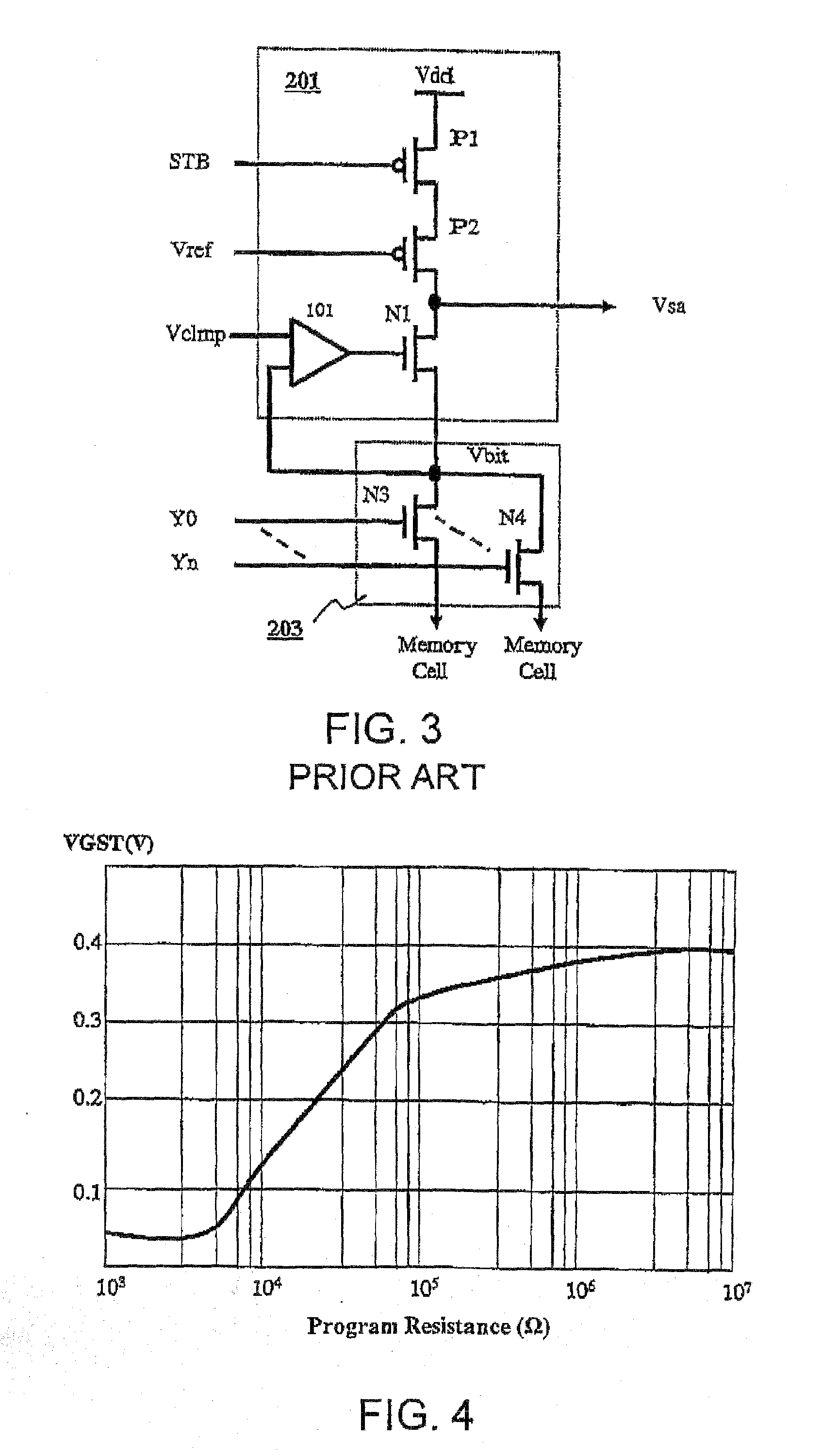Memory readout circuit and phase-change memory device
a memory readout and phase-change memory technology, applied in the field of phase-change memory, can solve problems such as difficult fast reading out, and achieve the effects of fast readout operation, preventing read disturb, and large set readout curren
- Summary
- Abstract
- Description
- Claims
- Application Information
AI Technical Summary
Benefits of technology
Problems solved by technology
Method used
Image
Examples
first embodiment
[0085]A readout circuit for a phase-change memory according to a first embodiment of the present invention will now be described in detail with reference to FIG. 9 and FIGS. 11 to 14. FIG. 9 is a circuit diagram of a readout circuit according to a first embodiment of the present invention. FIG. 11 and FIG. 12 respectively show a waveform diagram of operating voltage and a waveform diagram of an operating current, FIG. 13 and FIG. 14 respectively show volt-ampere characteristics of the phase-change element at reset and set states.
[0086]In FIG. 9, the readout circuit is constituted from a sense amplifier 201, a slowly cooling circuit 202, a Y switch 203, a reference amplifier 204 and a latch amplifier circuit 205. In readout, a bit line of a memory cell is first selected by the Y switch 203, and stored data are read out to the connection node Vbit. The stored data of the connection node Vbit are inputted to the sense amplifier 201, and the sense amplifier 201 outputs it as the sense a...
second embodiment
[0109]A readout circuit according to a second embodiment of the present invention will be described in detail with reference to FIGS. 15 to 17. The present embodiment is an embodiment providing a second circuit configuration of the readout circuit in which the slowly cooling circuit 202 in the readout circuit of the first embodiment is changed. FIG. 16 shows a block diagram of a second readout circuit. FIG. 16 and FIG. 17 respectively show waveform diagrams of operating voltage and current are respectively.
[0110]The readout circuit is constituted from a sense amplifier 201, a slowly cooling circuit 202, a Y switch 203, a reference amplifier 204, and a latch amplifier circuit 205. In this configuration, the sense amplifier 201, the Y switch 203, the reference amplifier 204, and the latch amplifier circuit 205 respectively have same configurations as those in the first embodiment. Parts of the same configuration will briefly be described.
[0111]The sense amplifier 201 is the same as th...
third embodiment
[0124]A readout circuit according to a third embodiment of the present invention will be described in detail with reference to FIG. 18. The present embodiment is an embodiment providing a third circuit configuration of the readout circuit in which the slowly cooling circuit 202 in the readout circuit is changed. FIG. 18 shows a block diagram of a third readout circuit.
[0125]The readout circuit is constituted from a sense amplifier 201, a slowly cooling circuit 202, a Y switch 203, a reference amplifier 204, and a latch amplifier circuit 205. In this configuration, the sense amplifier 201, the Y switch 203, the reference amplifier 204, and the latch amplifier circuit 205 respectively have same configurations as those in the first embodiment. Parts of the same configuration will briefly be described.
[0126]The sense amplifier 201 is the same as the circuit shown in FIG. 9. The sense amplifier 201 is constituted from transistors P1, P2, N1, and N5, and a comparator circuit 101. The tran...
PUM
 Login to View More
Login to View More Abstract
Description
Claims
Application Information
 Login to View More
Login to View More - R&D
- Intellectual Property
- Life Sciences
- Materials
- Tech Scout
- Unparalleled Data Quality
- Higher Quality Content
- 60% Fewer Hallucinations
Browse by: Latest US Patents, China's latest patents, Technical Efficacy Thesaurus, Application Domain, Technology Topic, Popular Technical Reports.
© 2025 PatSnap. All rights reserved.Legal|Privacy policy|Modern Slavery Act Transparency Statement|Sitemap|About US| Contact US: help@patsnap.com



